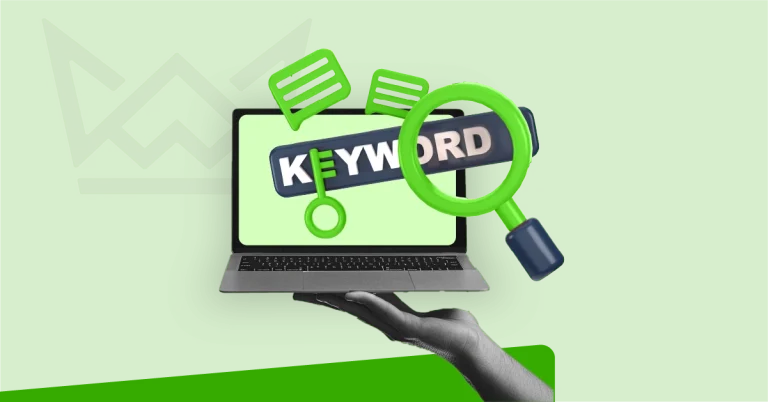Link building can be a tough game. You put in the work, but when those results don’t show up right away, it’s normal to feel a little frustrated. That’s when the idea hits: “What if I had my network of websites? I could just pop my links in whenever I need to!” It sounds like the perfect solution—a quick and easy way to boost your site’s authority and rank higher in search results.
But here’s the reality check: this strategy isn’t as new or foolproof as it seems. It’s known as building a PBN or a private blog network, which basically means creating or owning multiple websites just to link back to your main site.
Sounds clever? Maybe.
But it’s not exactly on Google’s list of approved tactics. In fact, using PBNs goes against Google’s guidelines, which can lead to penalties, tanking your site’s rankings instead of helping them.
While the idea of a network of websites sounds like a shortcut to better rankings, it’s important to play the long game and stick to Google-approved link-building practices that actually work for the long haul.
What is PBN?
A private blog network (PBN) is basically a bunch of websites built for one purpose—to provide backlinks to another site, hoping to give it a bump in Google’s search rankings. The main goal? To make search engines think the site is more authoritative than it really is.
SEOs set up PBNs by either creating new sites from scratch or snapping up older domains that already have some authority. From there, they start linking those sites back to the one they want to boost.
The idea behind using PBNs is all about “control.” Instead of waiting to earn natural backlinks, having a PBN means you get to decide where the links go, what anchor text to use, and which pages get the spotlight—all on your own schedule. It’s like having your own link-building machine at your disposal. Sounds like a dream, right?
Well, not quite.
This tactic is a clear violation of Google’s Webmaster Quality Guidelines. And breaking those rules can lead to some serious penalties that can drop your rankings like a rock.
But despite the risks, some folks still swear by PBNs. So, what’s the deal? Why do they keep popping up in SEO conversations?
Let’s dive in.
What are PBN Links?
PBN (Private Blog Network) backlinks come from a network of privately owned sites that are set up solely to link to another website, aiming to push its pages up the search rankings. These PBN sites aren’t built for content—they’re just there to pass on those juicy backlinks.
So, why do PBNs sometimes work? Well, Google’s algorithm looks at a site’s link profile to help decide its ranking. Ideally, quality content attracts a bunch of natural links, signaling that a page is valuable. But when you’re dropping links from your PBN to your main site, it’s not really about quality—it’s all about gaming the system.
That’s why search engines aren’t fans of PBNs. While they once were an easy shortcut to climb the rankings, Google’s gotten a lot better at spotting these networks and penalizing those who use them.
Suggested Read: 8 Types Of Link Building In SEO To Improve Authority and Search Engine Performance
How are PBNs Generally Built?
Backlinks from authoritative sites pack a punch, but building those sites can be both pricey and time-consuming. So, PBN owners take some shortcuts to get the job done.
One common trick is using expired domains that already have some built-in authority from the previous owner’s backlinks. They then add new content to these domains, sneaking in links to the main site within the articles.
Quality content can be costly, but PBN operators often cut corners by using cheap, low-quality articles, or even AI-generated content to fill up their sites.
To keep things under the radar, they’ll also try to cover their tracks. This includes using various hosting providers, mixing in unrelated content without any backlinks, and picking different themes to make the sites look unrelated.
How to Get PBN Backlinks?
There are two main ways people get PBN backlinks.
One option is to build your own network. In this case, you’d keep the PBN low-key and strategically link back to your own sites. If done right, this approach can give your site a temporary boost.
The second way is to buy PBN backlinks from someone else’s network. This allows you to get a lot of links quickly, but it comes with risks. These sellers often aren’t careful about hiding their network’s connections—they might even openly share which sites they own.
This makes such networks risky and often ineffective. In many cases, they’re just link-building scams, tricking buyers into paying for backlinks that won’t do much good.
Not Every Website Network Is a PBN
Lots of people own multiple websites and link between them. For example, we do this ourselves, linking from our main site to our PPC service, PPC Genius.
And that’s totally fine—as long as the links are relevant and not overdone. A group of websites only becomes a PBN if it’s specifically created for linking to other sites.
In fact, interlinking between owned sites is a common practice among big players. Just look at the navigation bar on Gizmodo; it links to 11 different sites, all pulling in massive search traffic.
How to Build PBN Links: 9 Effective Strategies
To build PBN (Private Blog Network) links, check these strategies.
1. Stick to One Niche
The trick is to make your PBN look natural. So, if your main site is about fitness, make sure all your PBN sites are related to that niche, whether it’s workouts, nutrition, or wellness.
This keeps the links relevant and adds real value to your main site’s SEO. It makes search engines believe these are genuine links from within your industry.
2. Hunt Down Quality Expired Domains
Expired domains are basically domains that someone lets go of but still has some SEO juice left. Hunt for domains that have a good amount of backlinks decent traffic, and haven’t been used for spammy content in the past.
Use tools like ExpiredDomains.net or Domain Hunter Gatherer. A good domain will have some authority in your niche and a clean history to give your PBN the power you need.
3. Check Domain Quality Thoroughly
Not all expired domains are gold mines. Do a background check before investing in one. Look for things like domain authority (DA), page authority (PA), backlink quality, and content history.
Use tools like Ahrefs to see who’s linked to it and the Wayback Machine to check its past content. If it was used for spamming or dodgy purposes before, skip it. A clean slate is what you’re after.
4. Buy the Domains from Various Sources
Once you find some solid domains, it’s time to buy them. But here’s the catch—don’t purchase all from one place. Spread out the purchases across different registrars like GoDaddy, Namecheap, and others. It’s like spreading out your bets; it keeps your network looking more natural and makes it harder to trace all domains back to you.
5. Mix Up the Hosting
You don’t want all your PBN sites hosted on the same IP address—it’s a dead giveaway that these sites are connected. Use a mix of hosting providers. Some opt for shared hosting, while others use cloud-based options to spread out IP addresses.
The goal is to have a diverse range of IPs, so no two sites look like the same person manages them.
6. Create Unique, Authentic-Looking Sites
Now comes the most important part: building your PBN sites. Each site should feel like a legit blog or resource in your niche. Use different designs, themes, and even different CMS platforms (WordPress, Joomla, etc.) to mix things up.
And don’t forget about the content—it needs to be original, high-quality, and useful. You’re building a “network” of sites, but each site should stand on its own.
7. Add Natural-Looking Content & Links
Once your sites are up, start publishing content. But remember, your links to your main site should come off as natural. Write posts that make sense for your niche and include links where they fit naturally.
Don’t just stuff keywords or spam your money site links; that’s a quick way to get caught. Also, link to other high-authority sites to balance things out and add to the site’s credibility.
8. Keep the PBN Sites Fresh & Active
A PBN site that sits idle will lose its power quickly. You need to make sure the sites are regularly updated with fresh content. It doesn’t have to be daily, but enough to keep it looking active and relevant.
A good mix of posts like articles, infographics, and videos can make the site look more genuine. The more active the site, the more authority it holds, which boosts your main site.
9. Watch for Patterns and Avoid Footprints
Regularly monitor your PBN sites and your main site’s SEO performance. And be on the lookout for any obvious patterns that might connect your PBN sites. Things like using the same hosting, similar design themes, or linking all your PBN sites together can create a “footprint” that makes it easy for search engines to spot your network. Keep things varied and random to keep your PBN under the radar.
Building a PBN isn’t for everyone since it carries risks if discovered. But if done right, it can be a powerful way to boost your site’s rankings. Just remember to keep everything diverse and avoid any obvious patterns that could tip off search engines.
Suggested Read: Link Building Outreach 101: Proven Methods to Secure High-Quality Backlinks
Should You Build PBN Links?
For most people, the answer is no. But to give a fair perspective, let’s break down the pros and cons of using PBN links.
Pros
- ✅ PBNs make it easy to create backlinks to your site.
- ✅ You get to pick the exact pages you want to boost with links.
- ✅ Control over anchor text means you can choose the most effective keywords.
- ✅ It’s possible to build a large number of links quickly.
- ✅ If you own the PBN, those links don’t cost you a thing.
- ✅ PBNs can sometimes provide a short-term bump in traffic.
Cons
- ❌ Google penalties for PBNs can be harsh and hurt your site’s rankings.
- ❌ Building a PBN is costly—you need to purchase expired domains and fill them with content.
- ❌ Purchased PBN links are often low-quality and ineffective.
- ❌ Any ranking increase could vanish once Google catches on.
- ❌ Selling a site with PBN links is tough, as they’re seen as risky.
What Google Thinks
Google makes its stance clear: PBN links are not welcome. Although the search engine’s Webmaster Guidelines don’t directly call out PBNs, they cover many related practices.
And with updates like the Link Spam Update in December 2022, Google is cracking down even harder on these tactics.
Google vs. SEOs
Google explicitly states that any link intended to manipulate search rankings is part of a link scheme and a violation of its guidelines. So, if you want to keep your site in good standing, avoiding PBN links is the best way forward.
Hiring a Legitimate Link Builder from Konker
If you’re looking to build quality backlinks without risking penalties, hiring a reputable link builder can be a game-changer. Platforms like Konker make it easy to connect with experienced professionals who understand the right ways to build links.
Unlike the risky tactics of PBNs, these experts focus on white-hat strategies, like guest posting, content outreach, and securing placements on relevant, high-authority websites.
Hiring a skilled link builder ensures your backlinks are organic, naturally built, and aligned with Google’s guidelines—all while saving you time and effort. Plus, you get to choose from a range of experts who suit your budget and SEO needs.
Conclusion
Private Blog Networks (PBNs) might seem like a tempting shortcut to boost your site’s search rankings quickly, but they come with risks. While building a PBN involves carefully picking expired domains, crafting content, and hiding connections between sites, it’s important to remember that this strategy directly violates Google’s guidelines.
So, while PBNs can work for a short while, the potential for getting caught and penalized can far outweigh any benefits.
It’s usually a better idea to focus on building quality backlinks through organic and legitimate methods that offer long-term results without risking your site’s reputation.








Quality articles or reviews is the main to interest the
viewers to visit the website, that’s what this website
is providing.
Definitely consider that that you said. Your
favorite justification seemed to be at the internet the easiest thing to remember of.
I say to you, I definitely get annoyed whilst people consider worries that
they plainly don’t recognize about. You controlled to hit the nail
upon the top and defined out the entire thing without having side-effects , other people
could take a signal. Will probably be again to get more.
Thank you
This is the right web site for anyone who wants to understand this topic.
You know so much its almost tough to argue with you (not that I really would want to…HaHa).
You certainly put a new spin on a topic which has been discussed for many years.
Excellent stuff, just wonderful!
You’re so awesome! I don’t believe I’ve truly read through anything like this before.
So nice to discover another person with a few original thoughts
on this topic. Seriously.. thank you for starting this up.
This site is something that’s needed on the internet, someone with a bit
of originality!
Keep up the great piece of work, I read few blog posts on this web site and I think that your web blog is very interesting and contains sets of excellent information.
Hiya, I’m really glad I’ve found this info. Nowadays bloggers publish just about gossips and web and this is really annoying. A good site with interesting content, that’s what I need. Thanks for keeping this website, I will be visiting it. Do you do newsletters? Can not find it.
I’m thrilled you’re enjoying the content! We’re currently in the process of configuring our newsletter, so stay tuned! Once it’s ready, we’ll be sure to let everyone know.